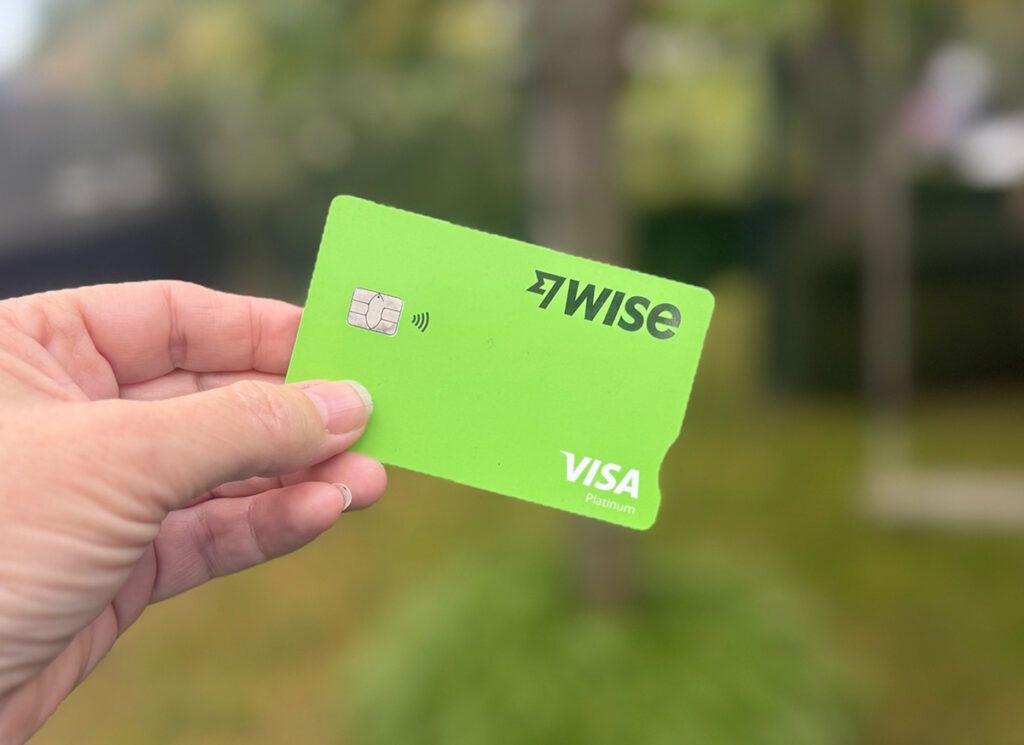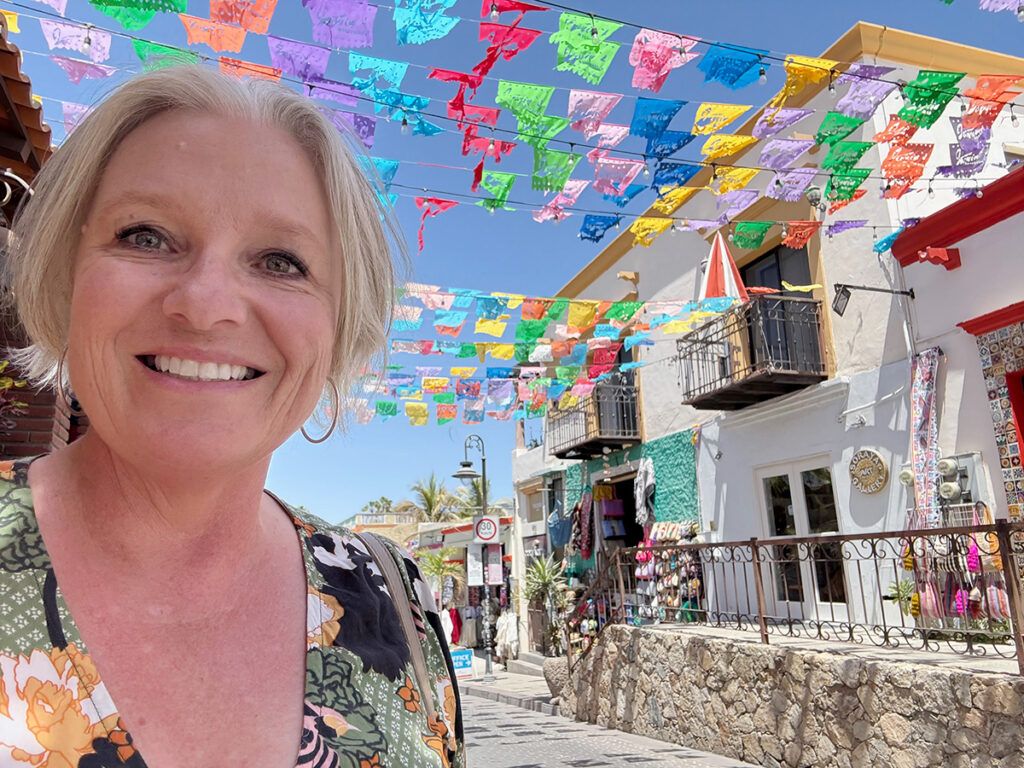The Wise card (formerly TransferWise) is a multi-currency debit card that’s been getting a lot of attention in the travel community lately, so here is my review.
Some of us are old enough to remember travellers cheques! The days of visiting a bank before you left for your big trip to get a booklet of paper cheques and signing them in front of the teller (explaining for the younger ones), then double signing it in front of the overseas vendor to make your purchase. How times have changed!
These days there are so many ways to access your money and make payments when travelling overseas, so in this post I’ll give you my thoughts on the Wise Card, and what other forms of payment I like to use when I travel.
I’ve had a Wise account for a few years now. They are virtual cards or you can get a physical card. You can transact without the need for a physical card using Paywave, or you can request a tangible card to use with eftpos machines or ATMs.
About three years ago I got a physical Wise Card to use on my travels in place of my bank credit and debit cards. I’ve just returned from using it in Mexico and the USA, plus Europe last year, so here are my thoughts.

What is the Wise Card?
The Wise travel card is a debit card linked to your online Wise multi-currency account. It allows you to hold and exchange money in 40+ different currencies and spend in 170+ countries. Wise markets itself as offering the “real exchange rate” without the hidden fees that banks typically charge.
The Good: What I Love About the Wise Card
Excellent Exchange Rates & Low Fees
After comparing exchange rates for foreign currencies across multiple platforms, I can confirm that Wise consistently offers some of the best exchange rates and lowest fees available to consumers.
Unlike traditional banks that advertise “no foreign transaction fees” but then hit you with marked-up exchange rates, Wise gives you the mid-market rate with a small, transparent fee added on top.
Clear Fee Structure
One thing I like about Wise is its transparency. Before making any transaction, you can see exactly how much you’ll pay in fees. The app breaks down:
- The exchange rate you’re getting
- The conversion fee (typically 0.35-0.5% depending on the currency)
- Any additional fees
Fee Information
Receiving payments in USD costs me US$6.11 per transaction. Receiving GBP costs £2.16 flat fee, receiving Euros costs €2.39 flat.
I can withdraw up to NZ$350 per month in one or two withdrawals for free. Over $350 and it’s 1.75% plus Wise charges a $1.50 fee. Use Wise card in same currency for free (that can be my USD in the US).
Comparing that to my BNZ cash account, they charge 2.25% fee on every cash withdrawal.
If you want the try the Wise Card, use my link and you’ll get up to NZ$900 currency transfer onto your card for free.
Free ATM Withdrawals (Up to a Point)
The card allows free withdrawals up to the equivalent of $250 (about NZ$400) each month from ATMs worldwide. After that, there’s a 1.75% fee on cash withdrawals.
While I wish the free limit was higher, it’s still better than most traditional banks, which often charge both a percentage and a flat fee per withdrawal abroad. The BNZ, for example, charges me 2-3% on cash withdrawals overseas, plus whatever the ATM machine charges.

Fast Currency Conversion
Need to convert USD to Euros for an upcoming trip? The process takes seconds in the app, and the money is immediately available on your card. No need to visit a physical exchange or plan days in advance as you might with a traditional bank transfer.
Good App Experience
The Wise app is genuinely one of the best financial apps I’ve used. It’s intuitive, fast, packed with useful features and gives a better deal than my own bank debit card. You can:
- Freeze/unfreeze your card instantly
- Set up notifications for all transactions
- Generate virtual card numbers for online shopping
- Track your spending by category and currency
Multiple Ways to Add Money
You can fund your Wise account via transfer from your bank account or debit card, or even Apple Pay in some regions. The flexibility is convenient, especially when you need to add funds quickly. You can also receive international payments, instead of PayPal or wire transfers, and save o fees.

Business Wise Account
I have two Wise accounts, my personal one and I also have a Business Wise account that I use to pay foreign currency to contractors in different countries : web designers, social media managers (if I had one).
I can access both accounts in the same app by toggling between them. For business customers it’s a cheaper way to transfer money to recipients than other methods like Western Union, PayPal or wire transfer and ideal for business use as the money moves instantly.
The Not-So-Good: Drawbacks to Consider
Account Setup Can Be Lengthy
While the application process is straightforward, the verification can take time. Wise requires proof of identity and sometimes proof of address, which is standard for financial services but can be frustrating if you’re hoping to use a physical card, instead of the online virtual card, I recommend applying at least two weeks before you plan to use it.
It costs a one-time fee of NZ$14 for a physical card. There are no monthly fees.
Not a Credit Card
This might be obvious, but it’s worth emphasizing that the Wise card is a debit card, not a credit card. This means:
- No building credit history with your spending
- No rewards points or miles
- No purchase protection that many credit cards offer
- No buying stuff that you can’t afford!
If you value credit card perks like travel insurance or airport lounge access, this is a significant drawback. For this reason I also travel with my credit cards and use those for larger purchases – to pay off after I’m home.
Limited Customer Service Options
While Wise offers customer support via chat and email, response times can be slow during peak periods. There is a 24/7 free phone line in the US, but you’ll pay if calling outside America. Remember, you can open your Wise app and cancel or pause your card if all else fails.
ATM Fee Reimbursement Policy Limitations
While Wise doesn’t charge fees for ATM withdrawals up to that monthly limit, they don’t reimburse fees charged by the ATM operators themselves. In countries like Thailand and Argentina, where ATM fees can be steep (like 16% in Argentina and 8% in Iceland), this can add up quickly.
Not Available in All Countries
Though Wise itself works in 170+ countries, the card isn’t available to residents of every country. Additionally, there are some countries where the card won’t work at all (like Nigeria and Venezuela) due to local regulations.
Monthly Limits May Be Restrictive
Wise imposes various limits on your account, including how much you can withdraw, spend, and add to your account. For most casual travelers, these limits are generous enough, but if you’re planning to make large purchases abroad or staying for extended periods, you might find them restrictive.
Who Should Get a Wise Card?
After using the Wise card for over a year, I believe it’s particularly well-suited for:
- Frequent international travelers who want to avoid currency conversion fees
- Digital nomads managing money across multiple currencies
- Online shoppers who frequently buy from international websites
- People sending money to family abroad who want to avoid traditional remittance fees
- Expats receiving income in one currency but spending in another
Who Might Not Like the Wise Card?
The Wise card might not be ideal for:
- Luxury travelers who value premium credit card perks
- Points and miles enthusiasts looking to maximize travel rewards
- People who rarely travel internationally and don’t need multi-currency capabilities
- Those who regularly withdraw large amounts of cash and would exceed the free ATM withdrawal limit
General Tips for Spending Money Overseas
- When given the option on a retail eftpos machine, choose local currency rather than selecting the conversion. This ensures the retailer’s bank isn’t making the foreign currency conversion at what is likely not the most competitive rate.
- When withdrawing cash from at ATM, try and find a physical bank’s machine. It’s ok if it’s a hole-in-the-wall, but if it’s attached the bank you can trust it.
- Take at least two credit cards or debit cards on your travels in case, as has happened to us before, the bank stops your card for any reason. (They suspected a transaction was fraud when the retailer accidentally put it through twice).
- Keep your cards separate. If you’re travelling with a partner/friend, keep one in each wallet. If you’re travelling alone, leave one with your passport in your safe just in case you lose your wallet.
- Add your cards to you Wallet on your phone and you can pay by pay wave – like the young people do. Just make sure your phone is locked with a PIN.

My Verdict: An Excellent Travel Companion
For frequent travelers, the Wise Card wins. It has earned a permanent place in my travel wallet. The savings on currency conversion alone have more than justified the minimal effort of setting up and maintaining the account.
I still carry a traditional credit card for larger purchases and situations where I want purchase protection, but the Wise card has become my go-to for daily spending abroad and online international purchases.
For most travelers, I believe the pros significantly outweigh the cons. The ability to spend in local currency without excessive fees, combined with the user-friendly app and transparent fee structure, makes it an excellent tool for the modern traveler.
If you’re planning an international trip soon, I’d recommend applying for a Wise card well in advance. Even if you decide it’s not your primary payment method abroad, having it as a backup option could save you significantly if your main card is lost, stolen, or unexpectedly declined.
If you want the try the Wise Card, use my link and you’ll get up to NZ$900 currency transfer onto your card for free.
Disclaimer: This review is based on my personal experience using the Wise card as of April 2025. Fees, features, and availability may change over time, so check the latest information on the official Wise website for their terms of use, Wise fees in your location and general information purposes.
What to Read Next?
You might like to read my review of the Priority Pass for airport lounge access all over the world, without flying Business.

Rose
Wednesday 7th of May 2025
Thanks for this! I am contemplating getting this for a trip to Japan next year, as an extra card to have and use as well as the credit card. It seems like it would be a very helpful to have several options for paying for things.